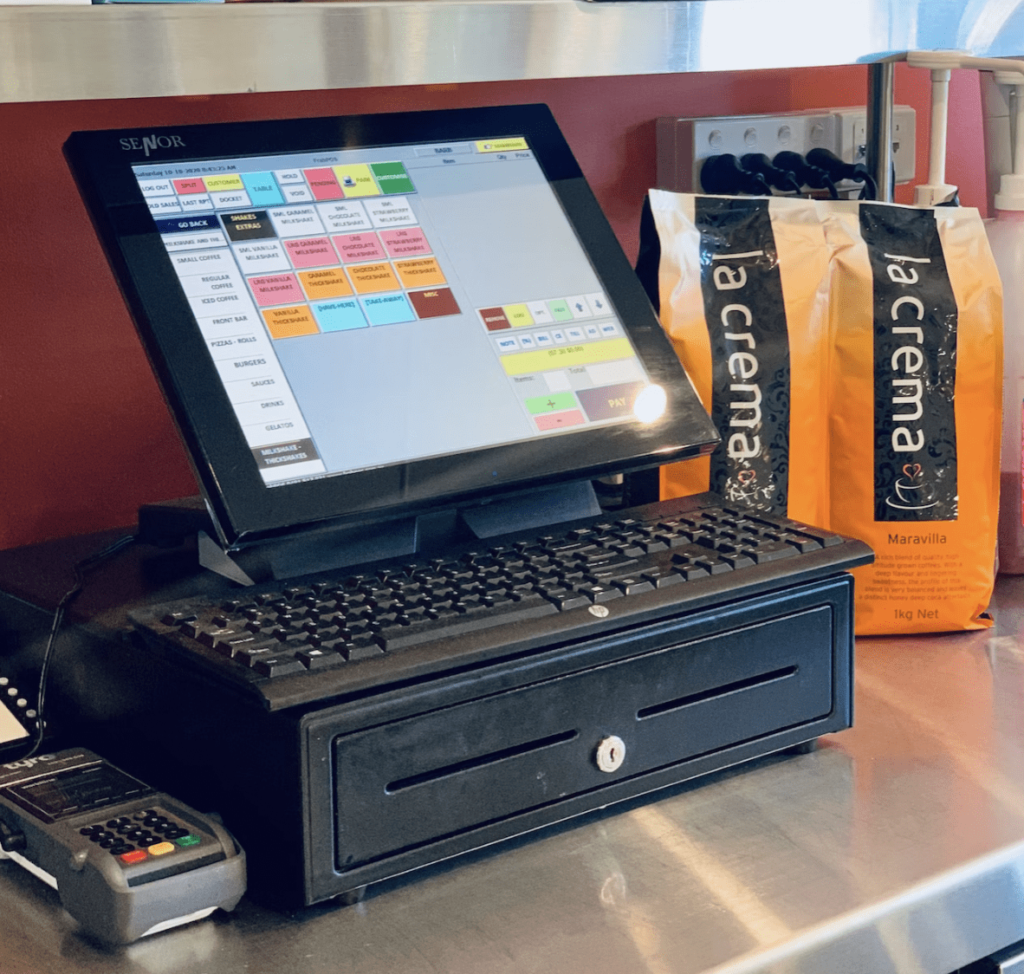Whether you’re selling products or services, expenses are simply a natural part of doing business. But the cost of merchant fees can add up quickly—sometimes exceeding 3% or even 4% of your gross sales.
Rather than simply accepting these costs as an expense necessary for your business, there are steps you can take to avoid merchant fees, which is why we created this guide.
So, how do you avoid merchant fees? Here’s the quick answer.
The only way to avoid merchant fees altogether is by not accepting credit cards, debit cards, or ACH transitions. This is not an option for the vast majority of businesses in the modern era.
However, you can avoid some merchant fees and significantly lower your costs associated with credit card processing—all without having to switch processors or change your equipment. Read on to find out how.
What Are Merchant Fees?
Merchant fees are the cost associated with credit or debit transactions. Charged directly to the business, the average cost of credit card processing is about 1.70% to 2.50%.
In addition to the cost for each individual transaction, it’s common for processors to charge extra fees to businesses for the use of varying processing services.
However, many merchant fees are unnecessary and not required. They’re simply a way for processors to squeeze extra dollars from unsuspecting businesses. Extra fees get added to your bill, and you just assume that it’s something you have to pay. That’s not always the case.
Some examples of merchant fees that you may find on your statements include the following:
- Authorization fee
- CPU fee
- Gateway auth
- Network fee
- Access fee
- Transaction fee
- Adjustment fee
- POS fee
- WATS fee
- Refund free
- Return auth
- AVS fee
- Statement fee
- PCI non-compliance fee
- Batch header fee
- Gateway fee
- Monthly fee
- Annual fee
- Early termination fee
- Fixed acquirer network fee
You can refer to our full list of credit card merchant fees and transaction fees here.
Merchant account providers charge fees to businesses to facilitate payments. The processor is providing you with a service and needs to be compensated for their role in the transaction. However, many processors charge above and beyond what they should be charging.
Merchant fees are negotiable, and many of these fees can be avoided altogether.
How Are Merchant Fees Calculated?
Merchant fees are calculated on each transaction. It starts at the card network level, where big networks like Visa, Mastercard, Discover, and American Express set something called “interchange fees.”
Interchange fees are non-negotiable. The exact cost of the interchange fee varies based on the card network, card type, merchant account, and transaction environment.
For example, a grocery store and an airline may get charged different interchange fees for the exact same transaction amount and exact same card. A retailer will typically pay different interchange fees for in-person transactions vs. online transactions. Restaurants may pay a different interchange fee to accept a Visa rewards card compared to a Visa business card.
There are thousands of different interchange combinations. The total annual transaction volume for businesses accepting a certain type of credit card can even impact the interchange rate.
From there, additional fees are added to each transaction. These additional merchant fees are imposed by the banks and processors that facilitate transactions for businesses.
Each player in the translation must be compensated for their role in the process. But similar to interchange fees, these charges can vary significantly from processor to processor.
For example, you might find a processor that charges 2.9% + $0.30 per transaction, regardless of the card type or transaction environment. Others may charge a fixed rate on top of the interchange fee. Some processors charge monthly or annual subscriptions to access lower merchant fees.
Bottom line—you’re going to have to pay something each time you accept a credit or debit transaction from a customer. But the way that cost gets calculated can significantly vary based on how your merchant account is set up.
7 Ways to Avoid Merchant Fees
There are dozens of different ways to avoid merchant fees, but the following seven options are the most effective:
- Learn How to Read Your Merchant Statements
- Choose the Right Pricing Structure for Your Merchant Account
- Reduce Fraud and Chargebacks
- Avoid Equipment Leases
- Monitor and Audit Your Statements Every Month
- Negotiate Merchant Fees Directly With Your Processor
- Don’t Switch Processors
If you’ve recognized that you’re paying too much for credit card processing and want to do something about it, this is the first place you should start. We’ll cover each of these tactics in greater detail below.
1. Learn How to Read Your Merchant Statements
Merchant fees are automatically taken from each transaction. So by the time your statement comes, you’ve already paid the fees to your merchant provider.
Due to this process, many businesses don’t take the time to truly dive into the statements. They simply look at the total cost (if they can find it), and the statement goes into a file or drawer.
Merchant account providers definitely do not make it easy to read merchant statements. Trying to decipher the different industry jargon, numbers, and strange formatting can sometimes feel like reading something in a foreign language.
However, I strongly encourage you to sit down and actually look at your statements line by line. This is the only way to find out what you’re actually paying for each transaction, and it’s an opportunity to identify fees that can be completely eliminated from your bill.
Identifying extra charges that aren’t required can help you save tens of thousands of dollars per year. Examples include PCI fees, statement fees, CPU fees—the list goes on and on.
Credit card processors are notorious for adding these extra fees to your statement in hopes that you’ll just blindly pay them without questioning anything. And unfortunately, that’s the case for many businesses.
If you need help reading your merchant statements, we can help. Just reach out to our team here at Merchant Cost Consulting, and we’ll walk you through what everything means.
2. Choose the Right Pricing Structure for Your Merchant Account
Next, you need to make sure the way your merchant fees are being imposed are beneficial to your business.
Examples of common pricing structures include:
- Tiered or Bundle — This is the worst type of pricing structure for merchants, and it should be avoided at all costs. Processors typically offer three different tiered rates, such as qualified, mid-qualified, and non-qualified. These might range anywhere from 1.7% to 3.25%. The problem with this structure is that the processor decides which tier each transaction falls under, giving them the ability to charge you the most expensive rate for every transaction.
- Flat Rate — Flat-rate processing is the simplest to understand, which is why many merchants go for this option. As the name implies, you’re charged a flat fee for each transaction, such as 2.9% + $0.30. However, it’s not in your best interest to go this route. For example, let’s say a particular interchange category for a transaction is just 0.10% + $0.25; your processor gets to keep all the profits between your flat rate and the interchange imposed at the card level.
- Subscription — Also known as membership pricing, this option gives merchants the ability to pay a flat monthly fee to access lower rates. This can best be compared to a wholesale club like Costco or Sam’s Club. You pay a fee to be a member, but you get access to lower markup costs. For example, you might pay $99 per month for a 0.75% markup vs. $299 per month for a 0.50% markup.
- Interchange Plus — Interchange plus pricing rates get calculated by charging you the true cost of the interchange rate imposed at the card level, plus a network markup from your processor. As previously mentioned, there are thousands of different interchange possibilities imposed at the network level, and this model gives you access to all of them. It’s the closest you’ll get to paying only what the card networks require, and your processor still gets compensated for its role in the transaction.
Interchange plus pricing is the best option for the vast majority of merchants. It gives you access to the lowest merchant fees, and it also gives you the most room for negotiation (which we’ll cover in greater detail later).
3. Reduce Fraud and Chargebacks
Fraudulent transactions and chargebacks can be costly for merchants.
In addition to incurring direct chargeback fees, too many of these can put you into a high-risk merchant category. If a processor thinks you’re a high risk, your processing rates can increase, and it just makes things more difficult for your business.
Something simple like an address verification system (AVS) can help you avoid these charges. It’s also important that you keep all of your equipment secure and up to date.
Outdated hardware and software are more susceptible to fraud. You should also make sure your staff is properly trained for in-person transactions. For example, if you’re swiping credit cards instead of using tap or chip readers, you’re not only more susceptible to chargebacks, but you’ll also pay higher fees at the interchange level.
4. Avoid Equipment Leases
Businesses that are strapped for cash may fall into the trap of an equipment lease. It’s a way to pay nothing upfront for a terminal, but it ends up costing you tons of extra money in interest over the lifetime of the lease.
We’ve seen businesses pay triple and even quadruple the amount of a terminal by leasing it as opposed to buying it outright. Worst of all, when the lease expires, you have nothing to show for it since the terminal isn’t actually yours.
Do whatever you can to purchase your equipment outright or try to negotiate it for free with your processor. This will help you avoid unnecessary merchant fees on your statement each month.
5. Monitor and Audit Your Statements Every Month
Earlier we covered the importance of learning how to read your monthly statements. But that skill is useless if you’re not actually putting it to work.
While it would be nice to assume that your processor is honest and holding up their end of the agreement, that’s not always the case. So you, or someone within your organization, must be responsible for monitoring the statements every month.
If that’s not something you can do in-house, our team at MCC can handle it for you. We’ll go through your statement each month to identify hidden fees that can be eliminated and removed from your statement altogether. We’ve even had success in negotiating refunds to merchants when processors have been charging unnecessary fees or failing to hold up their end of the agreement.
6. Negotiate Merchant Fees Directly With Your Processor
Here’s a secret that not many businesses realize—merchant fees are negotiable.
You can pick up the phone at any time and ask your processor to lower your rates. This is much easier when you’re well-informed.
So take the time to understand the payment landscape and what you should be charged. You can also ask them to remove unnecessary fees from your statements altogether.
The ability to negotiate with credit card processors comes with time, practice, and experience. And while you’re more than welcome to do this on your own, you can always have us do it for you.
At Merchant Cost Consulting, we negotiate with credit card processors every day. We’ve cumulatively saved our clients millions of dollars in merchant fees that can be avoided.
So if you’re not comfortable handling these negotiations on your own, or you’ve tried and unsuccessfully lowered your rates, reach out to us, and we’ll handle everything on your behalf.
7. Don’t Switch Processors
Switching vendors is NOT the best way to avoid merchant fees. In fact, switching processors can often be more expensive.
You’ll likely need new equipment, and you’ll need to re-configure everything where you accept payments. This includes online gateways to in-person POS systems, and more. Any custom integrations you have need to be re-configured as well, and you could even lose out on sales during the switch.
Instead, it’s better to keep your current processor and work on getting a more favorable arrangement. Your processor doesn’t want to lose your business. Remember, they get paid every time someone buys something via credit or debit card.
Most processors are willing to make concessions and eliminate fees in an effort to keep your business.
Final Thoughts
Some merchant fees are unavoidable, but others can be lowered or avoided altogether.
Stop overpaying for credit card processing, and follow the tactics outlined in this guide. These tips can help you save tens of thousands or potentially hundreds of thousands of dollars.
And if you need some extra help, you can always let the team here at MCC walk you through everything. We’ll audit your statements, identify fees that can be avoided, negotiate rates directly with your processor, and continue monitoring your statements each month.




